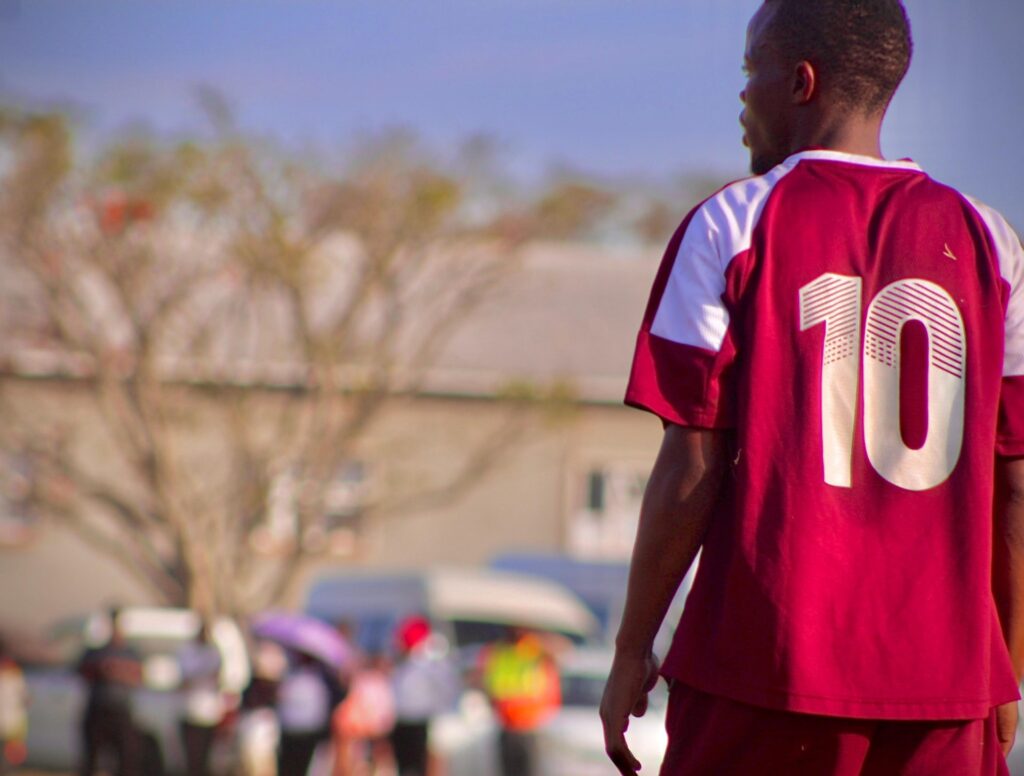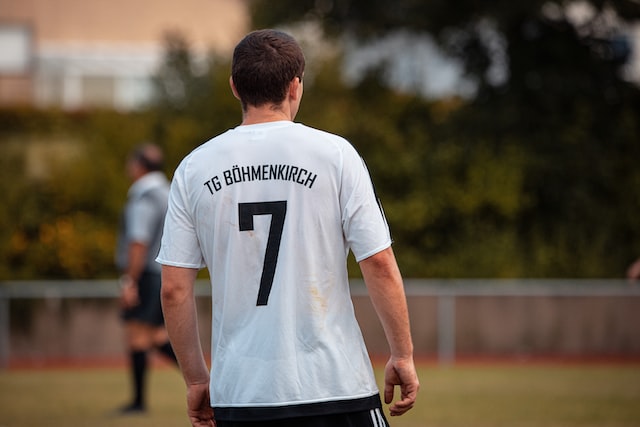There are so many position abbreviations in soccer, making it difficult for beginners to come to terms with the different positions on the field.
But don’t fear – you’ve come to the right place! In this article, we run through the most common position abbreviations in soccer to help you understand what people mean when they say or write specific positions.
GK – Goalkeeper
The goalkeeper (GK) is the most specialist position on the field. The goalkeeper can use their hands inside the penalty area and is tasked with stopping the ball from entering the net.
Wearing a different colored jersey from the rest of the team, the goalkeeper is a lonely position, but one of the most important on the field!
FB – Fullback
Full-back (FB) is the abbreviation given for the defenders that play wide. They occupy the right-back and left-back positions and have been known as fullbacks for a long time.
But there are various types of fullbacks, and some are more attacking than others. The position abbreviations in soccer that follow are extensions of fullbacks and can often be used interchangeably, but it’s worth understanding them in isolation.
RB/LB – Right back/Left back
The right-back (RB) and left-back (LB) are defensive positions on either side of the field. In a traditional team, the right back wears number 2, while the left back wears number 3.
When a defender is regarded as a right or left back, they focus primarily on defending and may not offer a great deal going forward. This is in stark contrast to modern fullbacks and wingbacks, as we explain below.
RWB/LWB – Right Wing Back/Left Wing Back
The right wingback (RWB) and left wingback (LWB) feature heavily in many of the most attacking teams in world soccer, and they are specialist roles that have evolved over the years.
Instead of merely defending the wide areas, wingbacks are responsible for attacking at pace and often spend more of their time in the attacking third of the field.
Liverpool employ wing backs in their formation, and Trent Alexander Arnold and Andy Robertson are great examples of this position in action.
SW – Sweeper
A sweeper (SW) is another specialist position in soccer that is reserved for ball-playing defenders. The sweeper sits behind the defensive line, “sweeping” up balls that are played in behind and clearing the danger.
Sweepers require excellent positional sense and need to be able to read the game really well. While they’re not as popular in soccer as they once were, sweepers can still play an important part in your team’s tactical setup.
CB – Center Back
A center back (CB) plays at the heart of the defense and is responsible for thwarting attacks as and when they emerge. Central defenders are usually tall and physically strong, and they need to be good in the air and strong in the tackle.
It helps when a team employs a left-footed center back alongside a right-footed center back, as they can play the game with their correct foot. This reduces the likelihood of them making errors out on the field.
CDM – Central Defensive Midfielder
A central defensive midfielder (CDM) is tasked with playing the anchor role in midfield and assumes a starting position that is just in front of the central defenders.
The CDM is tasked with breaking up play and often creating attacks, with many soccer playmakers employed in the CDM position.
Not every team plays with a central defensive midfielder, but they play an integral role in the team and offer some extra protection against counterattacks, making them an important cog.
CM – Central Midfielder
A central midfielder (CM) plays in the middle of the field and is responsible for attacking and defending. Unlike the CDM, the CM has to go back and forth in equal measure on the field.
The center of the field is often referred to as the engine room; such are the required fitness levels of a CM. Many central midfielders specialize in attacking or defending, but others are all-rounders, adept at both aspects of the game.
CAM – Central Attacking Midfielder

A central attacking midfielder (CAM) can be deployed immediately behind the strikers. This role is sometimes referred to as “the number ten,” as the player is responsible for linking and building attacks for the forward players.
Depending on a team’s tactics, they might employ two CMs, or a CDM and CAM, which is a way to define players’ roles more succinctly. Either way, the CAM also plays an important role on the field and usually pulls the strings in the midfield areas.
RM/LM – Right Midfielder/Left Midfielder
A right midfielder and left midfielder (RM) (LM) play wide of the central midfielders and are responsible for creating chances from the wide areas. RMS and LMs aren’t as popular as they once were, with many managers preferring to play with wingbacks and wide forwards, as we explain below.
Still, when a team employs 4-4-2 as a tactic, the RM and LM play crucial roles, particularly when it comes to getting balls into the box for the forwards.
RW/LW – Right Winger/Left Winger
Right-wingers (RW) and left-wingers (LW) are much more prominent in the modern game than RMs and LMS. They play wide of the central striker and attack from wide areas, posing significant problems to defenders.
Most teams deploy wingers in modern-day soccer, as they’re an extremely effective way to attack from different areas of the field. Some of the most exciting players in the game – Kylian Mbappe, Vini Junior, Mo Salah – are RWs and LWs.
FWD/ST – Forward/Striker
Last but not least, the forward (FWD) or striker (ST) is the player that features in the center of the attack. Traditionally, they wear the number 9 shirt and take most of the responsibility for scoring goals in the team.
While there are lots of different types of forwards – false nines, poachers, and target men, for instance – their job is the same; to take chances provided by their teammates and to score as many goals as possible!
Recap: Position abbreviations in soccer
Like most sports, there are so many position abbreviations in soccer to try and wrap your head around. As explained throughout, each of these abbreviations refers to a crucial position on the soccer field.
Now, whether you hear the term CDM or RW, you no what position that person is referring to and can get a much better idea of how a soccer game unfolds.

